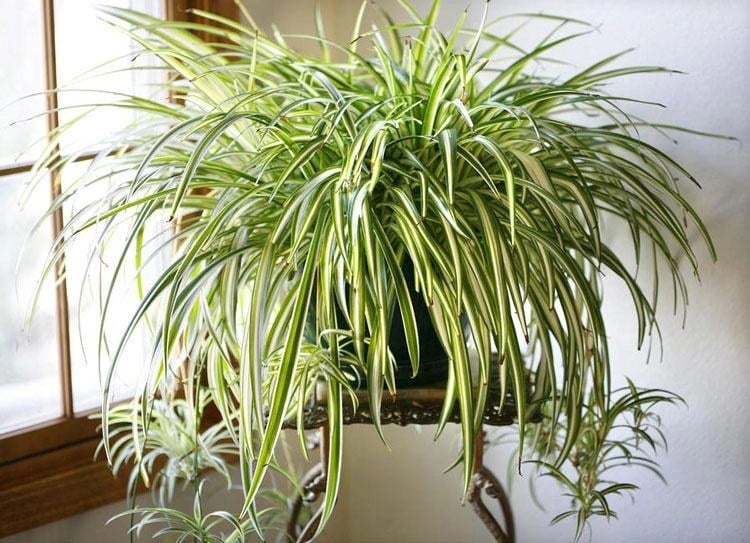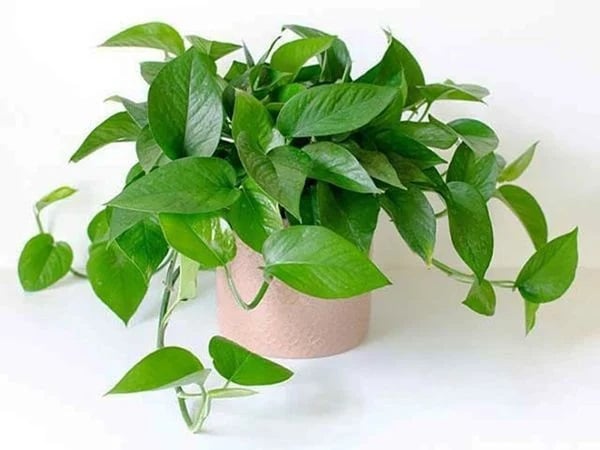1. Spider Plant
You may not have heard of the spider plant, but it’s an excellent air-purifying plant that is commonly grown in many places. It has a unique growth habit, with long, trailing stems that produce offshoots, giving it a spider-like appearance.

Spider Plant – Easy to Grow and Great for Air Purification
Propagation is typically done through stem cuttings. Simply take a 5-10cm long stem tip with a young shoot and place it in water. Within 7-20 days, roots will develop, and after 20 days, you can pot the new plant. Keep it in a shaded area and water it generously.
Another method is root division. Remove the plant from its pot, cut away the older roots, and separate 3-5 healthy stems. Plant these directly into the soil.
Spider plants also produce seeds. At the start of the rainy season, sow the seeds, ensuring they are only lightly covered with about 0.5cm of soil. With temperatures around 15°C, they will germinate within two weeks. Keep the soil moist during germination and avoid overwatering to prevent rot, but also ensure the soil doesn’t dry out completely.
2. Boston Fern
The Boston Fern is a small, compact plant, growing to a height of 40-90cm. It thrives in shaded or partially shaded areas and should be protected from direct sunlight.

Boston Fern – A Moisture-Loving, Easy-to-Care-for Houseplant
This fern is a great air purifier, effectively removing formaldehyde and other toxins like toluene and trimethylbenzene emitted by computers, printers, and copiers. It also increases humidity, making it an excellent choice for homes and offices.
Place your Boston Fern in a bright spot, allowing it to receive indirect sunlight. It grows best in a mixture of peat moss, sand, and garden soil. Keep the soil moist but not soggy. If your fern looks wilted, a quick drink of water will perk it up in no time.
3. Pothos
Pothos, or Epipremnum aureum, is a species of flowering plant native to Solomon Islands and Indonesia. It has heart-shaped leaves, short inflorescences, and long, beautiful white roots, which are particularly striking in hydroponic setups. Pothos is not only aesthetically pleasing but also has beneficial environmental and biological effects.

Pothos – An Adaptable and Easy-to-Care-for Houseplant
In feng shui, pothos is believed to bring good luck, peace, and success in studies and work to its caretaker. It is incredibly adaptable and quickly adjusts to its environment. Pothos can be grown in soil or hydroponically with equal success.
To propagate pothos, cut a stem with several nodes and plant it in coarse sand or pearl stone. Avoid planting directly into water or moist soil, as pothos only propagates when its growth is restricted.
The Ever-Blooming Edible Garden: Transform Your Home into a Flourishing Floral Paradise
Are you tired of your dull living space? Do you long for a vibrant, green oasis in your home? This remarkable plant offers the perfect solution. With its ability to provide relaxation, enhance your environment, and even offer a source of fresh, healthy food, it will transform your space into the tranquil haven you’ve always desired.





































